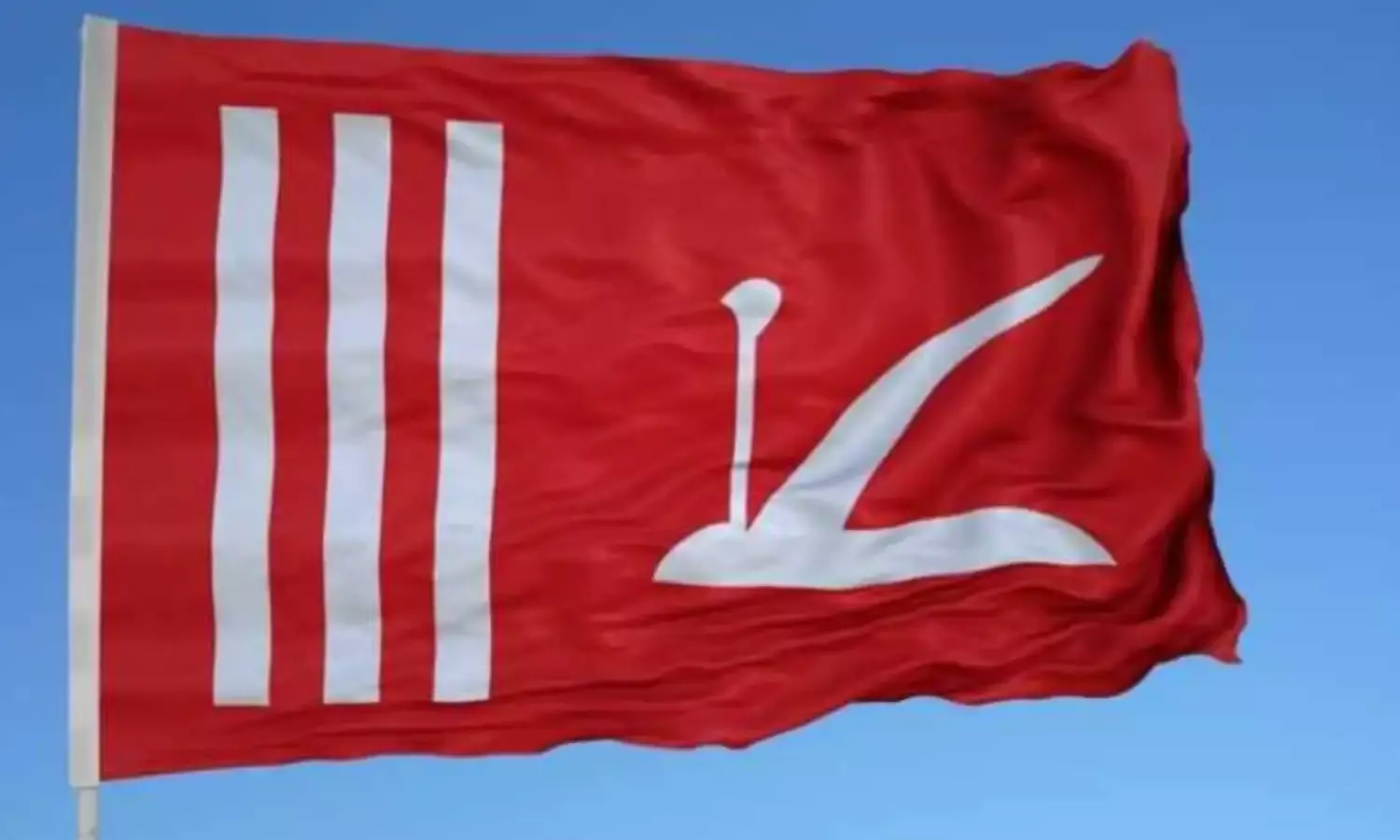The History of the Flag of Jammu and Kashmir
People's Alliance for Gupkar Declaration

The coming together of seven mainstream political parties in Kashmir to form a People’s Alliance for Gupkar Declaration to restore the constitutional status of Jammu and Kashmir, nullified by Parliament on August 5 last year, marks a significant development in the history of Jammu & Kashmir.
The Alliance’s decision to use the erstwhile state flag in its struggle to regain constitutional status is reminiscent of Kashmiris’ arduous fight from 1931 until the state was integrated with the Indian Union. They fought under the same flag against the Dogra ruler Maharaja Hari Singh's oppressive and exploitative rule.
Chairman Farooq Abdullah categorically asserted that the alliance is anti BJP and not anti national, and they have come together to fight the BJP regime in New Delhi which has tried to destroy the Constitution, divide the nation and divide the people of Jammu, Kashmir and Ladakh in the name of religion.
Outlining the objective of the Alliance to get back the rights of the people, he affirmed that it was fighting to safeguard the identity of their people.
The alliance’s anti BJP under the flag of the erstwhile state is evocative of the words of Jawaharlal Nehru who as Prime Minister of India in a speech on January 1, 1952 claimed that the people of Jammu & Kashmir and their leaders’ decision to join India by shunning Pakistan in 1947 vindicated the secular policies and Constitution of India.
Nehru then remarked with a lot of apprehension and anxiety, “But just imagine what would have happened in Kashmir if the Jan Sangh or any other communal party had been at the helm of affairs… These people talk of an undivided India but as a matter of fact India would be fragmented into a thousand pieces if they were in power”.
The essence of what Nehru said in 1952 was there in the observation of the late Biju Patnaik who while intervening in the discussion on a no-confidence motion in the Lok Sabha in 1997 famously told BJP leader Sunder Lal Patwa that the nationalism advocated by the BJP would break India into twenty pieces.
The leaders of the Gupkar Alliance have come together in 2020 and articulated the danger posed by these forces to our Constitution.
It is worthwhile to study the history of the struggle of the peasants and workers of Jammu and Kashmir under the leadership of the National Conference. In the midst of their struggle the peasants faced firing from the police and several people were killed. The surviving leaders picked up the blood-soaked clothes of a dead colleague and proclaimed that the red coloured cloth would be their flag.
After the accession of Jammu and Kashmir to the Indian Union in 1947 under the conditions spelt out in Article 370, the leader of that state Sheikh Abdullah moved a resolution in the Constituent Assembly of the State on June 7, 1952 for the adoption of a red coloured national flag with three vertical red lines and a plough next to those lines. Syed Mir Qasim moved an amendment to drop the word “national” which was adopted and the flag of J&K approved by its Constituent Assembly.
In a speech delivered in the Lok Sabha on July 24 that year Prime Minister Nehru spoke about the reasons for accepting the Kashmiri flag. He said the leaders of Kashmir had agreed that the national flag of India would be supreme and get the same status in Kashmir as it had in other States of the Union.
Nehru then informed the House: “The State flag was in no sense a rival to the National Flag, but for historical and sentimental reasons connected with their struggle for freedom in Kashmir, they wanted this State symbol to continue. This was agreed to. It was added that this should be made clear in a formal manner, preferably by the Constituent Assembly of the State.”
In a white paper issued by the J&K Government in 1952 the coexistence of both the flags was stated and it was unambiguously provided that the supremacy of the national flag would not be compromised, and it would get the same honour in the State as accorded to it in rest of India.
Mohammed Abdullah Sheikh made it clear that Kashmir had joined India because of the convergence of secular outlook of both India and Kashmiris, and affirmed that the state’s flag was in no sense a rival of the national flag.
It is worth noting that the flag of Jammu and Kashmir represented the struggle of the workers and peasants of its people cutting across religious dividers. Although the majority of the people of the state profess the Islamic faith its flag had nothing to do with Islam or any religion.
It was indeed strange that when their struggle paved the way for Sheikh Abdullah to assume the office of Prime Minister of the State and the Constituent Assembly of J&K abolished the monarchy, Shyama Prasad Mookerjee demanded the restoration of monarchy. Prime Minister Nehru deeply regretted Moojerkee’s support to a princely ruler at the cost of the progressive leaders of the National Conference.
It is instructive that the spirit of that people’s struggle which established a constitutional scheme of government is being invoked by the People’s Alliance for Gupkar Declaration in 2020 to restore the status of Jammu and Kashmir and safeguard their identity and culture.
It will require sensitivity and statesmanship to appreciate the historical significance of the struggle launched by the Alliance for the cause of inclusive and creative nationalism. Can the leaders of the so-called New India live up to the expectations of those who stand for the Constitution and inclusive nationalism?
S.N Sahu served as Officer on Special Duty to President of India the late K.R Narayanan



